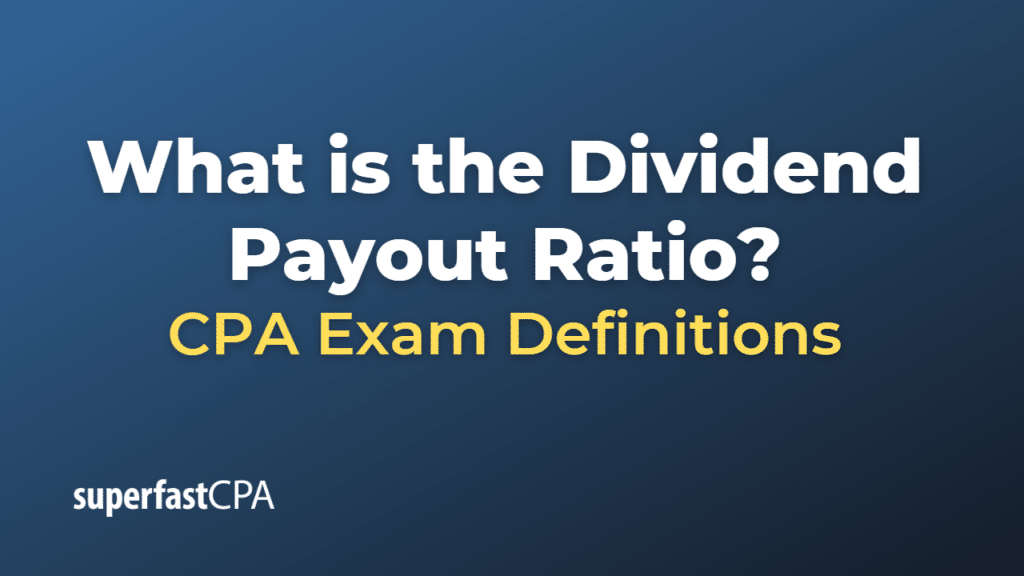Dividend Payout Ratio
The Dividend Payout Ratio is a financial metric that shows the proportion of a company’s earnings that is paid to shareholders in the form of dividends. It’s a way to see how well a company’s earnings support the dividend payments. The dividend payout ratio can be calculated using either earnings or free cash flow.
When using earnings, the formula is:
\(\text{Dividend Payout Ratio} = \frac{\text{Dividends}}{\text{Net Income}} \)
When using free cash flow, the formula is:
\(\text{Dividend Payout Ratio} = \frac{\text{Dividends}}{\text{Free Cash Flowe}} \)
A lower payout ratio could indicate that a company is retaining more earnings for reinvestment in the business, while a high payout ratio could indicate that the company is returning more of its earnings to shareholders.
However, a high payout ratio can also indicate a risk for dividend sustainability, especially if the company’s earnings are volatile. If a company is paying out most of its earnings as dividends, it may not have enough flexibility to maintain those payouts during a downturn.
As always, it’s important to interpret the dividend payout ratio in the context of a company’s overall financial condition and strategy, industry norms, and other factors. Not all companies pay dividends; growth-oriented companies, for instance, often choose to reinvest all their profits back into the business.
Example of the Dividend Payout Ratio
Let’s say we have a company named HealthyCo. For the current fiscal year, HealthyCo reported net income (earnings) of $1 million. In the same year, HealthyCo paid out $200,000 in dividends to its shareholders.
We calculate the Dividend Payout Ratio using the formula:
\(\text{Dividend Payout Ratio} = \frac{\text{Dividends}}{\text{Net Income}} \)
\(\text{Dividend Payout Ratio} = \frac{\$200,000}{\$1,000,000} = \text{0.2 or 20%} \)
So, HealthyCo’s Dividend Payout Ratio is 20%, which means it paid out 20% of its net income as dividends. This could suggest that HealthyCo has a balanced approach to dividends and reinvestment, as it is returning a portion of its profits to shareholders while also retaining a substantial portion for potential reinvestment in the business.
However, let’s consider a different scenario where HealthyCo paid out $800,000 in dividends from the same $1,000,000 net income. The Dividend Payout Ratio would then be:
\(\text{Dividend Payout Ratio} = \frac{\text{Dividends}}{\text{Net Income}} \)
\(\text{Dividend Payout Ratio} = \frac{\$800,000}{\$1,000,000} = \text{0.8 or 80%} \)
In this case, HealthyCo’s Dividend Payout Ratio is 80%, which means it paid out the majority of its earnings as dividends. This could suggest that HealthyCo is returning most of its profits to shareholders, leaving less available for reinvestment in the business. While this might be appealing to income-focused shareholders, it could also suggest a potential risk if HealthyCo’s earnings decrease in the future, as it may have less flexibility to maintain the high dividend payments.
Remember, this is a simplified example, and the interpretation of the Dividend Payout Ratio can depend on many factors, including a company’s financial condition, industry norms, and business strategy.













